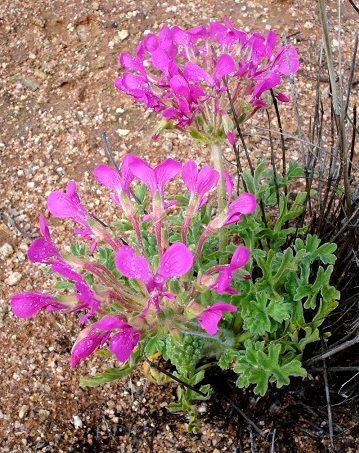Pelargonium incrassatum

Author: Ivan Lätti
Photographer: Judd Kirkel Welwitch
Pelargonium incrassatum, commonly known among particularly the indigenous locals as the t'neitjie, annually grows a leaf tuft or a few close together from a thick and twisted, somewhat cylindrical and often branched tuber. The plant does not grow taller than about 30 cm. The plant is associated through its common name to P. echinatum that is commonly known in Namaqualand as the bobbejaan-t'neitjie.
The deeply lobed leaves end in two-tipped, oblong, silky green strips that grow at odd angles, clustered well below the flowers in picture.
Flower colour varies from pinkish magenta to cerise. The corolla tube may be as long as 4 cm. Flowers are seen at the end of winter and the start of spring.
The species distribution is in a near coastal strip in the west of the Northern Cape from the Richtersveld to the Namaqua Klipkoppe, slightly into the far northwest of the Western Cape; also found in the southwest of Namibia.
The habitat is rocky outcrops and gravelly slopes in harsh climatic conditions of low winter rain and temperature extremes. The habitat population is deemed of least concern early in the twenty first century.
Some locals consider the tuber a delicacy (Manning, 2009; Le Roux, et al, 2005; iNaturalist; ww.bihrmann.com; http://redlist.sanbi.org).

